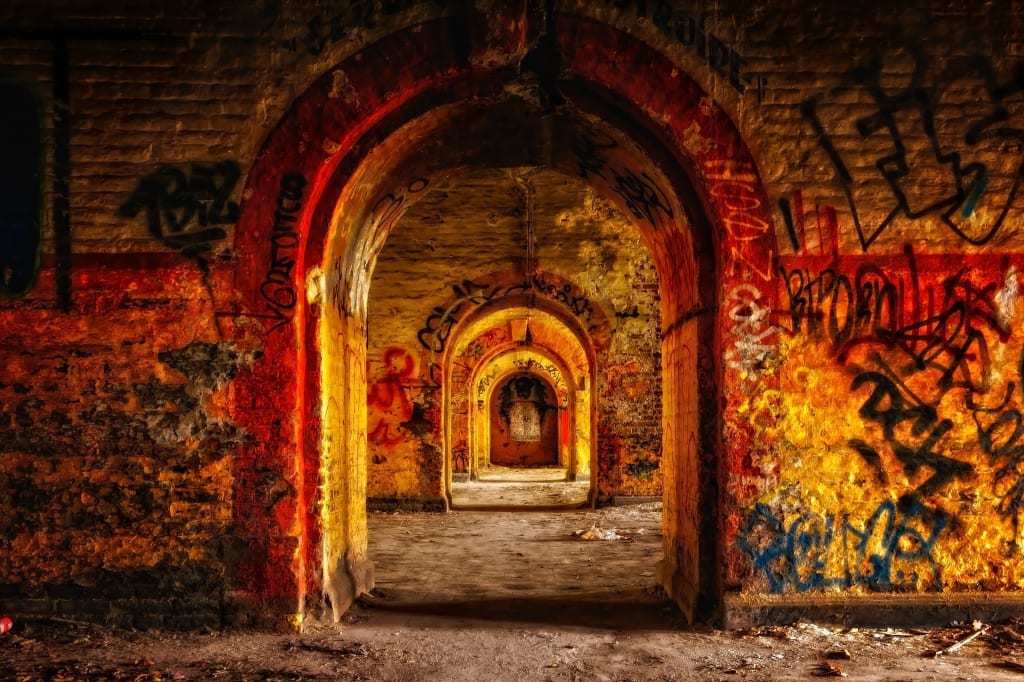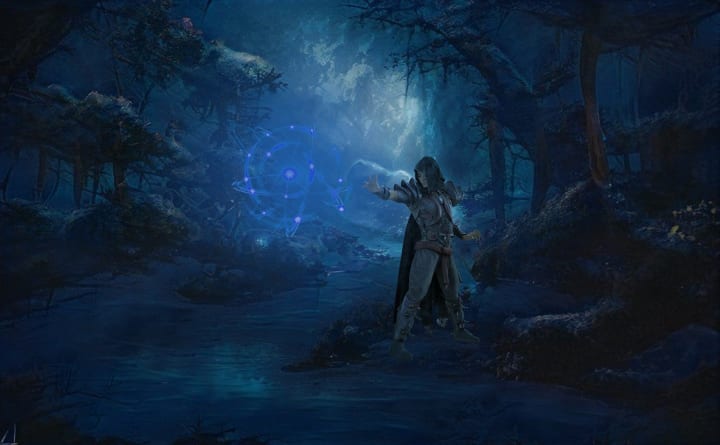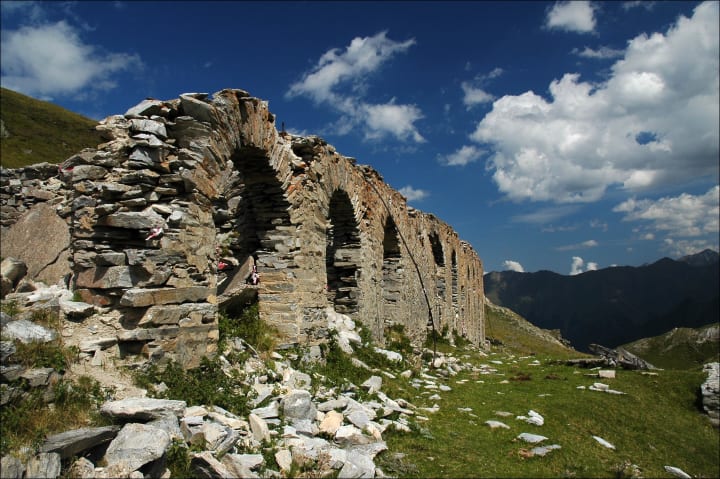Walls Work (In Pathfinder, At Least)
RPG Gaming Guide

The grimoires of wizards and witches, the bloodlines of sorcerers, the blessings of clerics, and the curses of oracles abound with spells of all kinds. From setting your foes ablaze, to calling lightning from the sky, to teleporting halfway across the world, or even bending the mind of one's enemies, magic is a potent tool.
But one of the spells that can utterly dominate a battlefield, and shift the balance of power rather quickly, is the ability to create a wall wherever, and however, you want.
An Ounce of Prevention, Or a Ton of Cure

When most of us think of dropping a wall spell, we tend to think of it in terms of in-combat use. Whether we see the fighter go down, and the wizard wants to summon a defensive wall protecting him until he can be revived, or a fresh group of enemies are trying to rush in from a flank and the cleric cuts off their ability to reach the melee with a wave of their holy symbol, we usually think of these spells as an in-the-moment tactical decisions.
Now, don't get me wrong, they are very useful in this capacity. This is particularly true for spells like wall of ice, wall of fire, wall of bones, and similar wall spells that have relatively short durations. However, if you haven't used wall spells as a preventative measure to avoid combat entirely, then you haven't experienced the joy of a truly devastating tactical maneuver.
This falls into two categories; immediate negation, and long-term change.
Immediate negation means that a wall spell is used to avoid combat in the short-term. This works best with foes like constructs and mindless undead, who do not see a wall appear and think it should be investigated, but it can be used creatively in most situations where the party is either moving stealthily, or has some knowledge of the terrain and layout of what's ahead of them (such as by using arcane eye, or similar spells to gather information).
Take the scenario where a room full of zombies are standing around, told to attack any living beings they see enter their room. If a sorcerer casts a spell like silent image to create an illusory wall to screen the PCs as they cross the room, it's likely this combat can be avoided. Or in what I've taken to calling the lampshade maneuver, putting that wall around the enemy entirely so they just see a wall all around themselves, means they should just stand there, unseeing, as the PCs walk right by. This can be done with more damaging walls as well, such as blocking hellhounds inside their kennels with thick sheets of ice before they can even attack, or sealing off a large pit in the floor that an enemy monster would rise out of by covering it in a thick layer of deadly brambles as you walk on past, but those kind of opportunities are rarer.
Long-term change is the option we least often get to use, but which can be the most satisfying.

This is where we get into spells like wall of stone, wall of iron, and one could argue illusory wall as well. These kinds of wall spells are up around level 4, 5, and 6 (depending on your class and how you're accessing them), so this is when you start getting into big guns territory. However, the right wall spell placed in the right spot can feel like flipping the difficulty from impossible all the way down to easy without even rolling a die.
Take the same scenario where the party has been scouting a dungeon. They know that as soon as they grab the treasure that it's going to trigger a series of fail safes that they'll have to battle through in order to get out again. This may start with the inert statues along one wall of the treasure room coming to life to stop them, a bridge in the next chamber collapsing if they don't cross quickly enough, and the master of the dungeon striding out from his private chamber to see what all the commotion is about.
A party with access to wall spells can make phenomenal use of them in these scenarios.
Start with the Big Bad's private chambers. The party doesn't want to ambush them in this room (where they have magic items, protections, etc. laid out), but they know taking the treasure will set off an alarm that will draw that antagonist to them. If their scouting tells them there's only one door in and our of that chamber, they could easily cover that door with a wall of stone or wall of iron spell, and just leave it there. If this means they trigger the alarm early, that wall will either trap the Big Bad in their room or (more likely) delay them long enough for the party to get a bit of a head start.
Consider the bridge. The party could easily reinforce the bridge with a wall of stone to ensure their retreat isn't going to be cut off because they were a few rounds delayed in getting out of the treasure chamber. And if antagonists want to trap them on the other side of the chasm, they have to spend time and resources destroying this wall to make that happen.
The easiest thing to contend with is the statues. Walling them off means they'll need to spend several rounds trying to smash through the stone or iron they've been trapped behind to get to the intruders, and hopefully by that time the party will be long gone.
Walls Have Their Weaknesses, Too

As I mentioned back in Illusion Spells Are Far More Tactical Than We Give Them Credit For, everything has a weakness. Even the most variable tools have situations where they aren't going to carry the day, so while wall (and wall-esque) spells are definitely good things to have on-hand, there's a time and a place where they'll work really well, and a time and a place they could become a liability.
As a for-instance, there are several enemies that gain some variety of teleport effect. Dimension door is the most common, but enemies might also be able to blink, or even to step into one shadow and out of another. Something like wall of force might keep an enemy behind a barrier, but if they're a spellcaster they might be able to still affect the battle. Some walls might be destroyed, such as by using something like rusting grasp on a wall of iron, or bypassed by flying over the wall. Many walls can be walked through (wall of fire is the obvious example), and if an enemy has true seeing they'll be able to ignore anything illusory that isn't made of shadow.
In the worst case scenario, though, a wall can hem the party in and cause a serious problem. This goes double for walls the caster can't just remove from the field, such as a wall of stone blocking off the party's retreat when an unexpected threat presents itself, or when something that was a tactical advantage (like a wall of fire) becomes a serious problem (such as when it turns out this monster heals from fire damage, but the party is still harmed if they get too close to the wall).
So, as with all things, remember that walls do work... but there's an asterisk at the bottom of that recommendation.
Like, Share, and Follow For More!
That's all for this week's Crunch topic! Don't forget to check out my full Vocal archive for more... or if you'd like to read some of my books, like my sword and sorcery novel Crier's Knife or my latest short story collection The Rejects, head over to My Amazon Author Page!
To stay on top of all my latest releases, follow me on Facebook, Twitter, and now on Pinterest as well! And if you'd like to help support me and my work, consider Buying Me A Ko-Fi or heading over to The Literary Mercenary's Patreon page to become a regular, monthly patron! Even a little bit of help can go a long way, trust me on that one.
About the Creator
Neal Litherland
Neal Litherland is an author, freelance blogger, and RPG designer. A regular on the Chicago convention circuit, he works in a variety of genres.
Blog: Improved Initiative and The Literary Mercenary






Comments
There are no comments for this story
Be the first to respond and start the conversation.